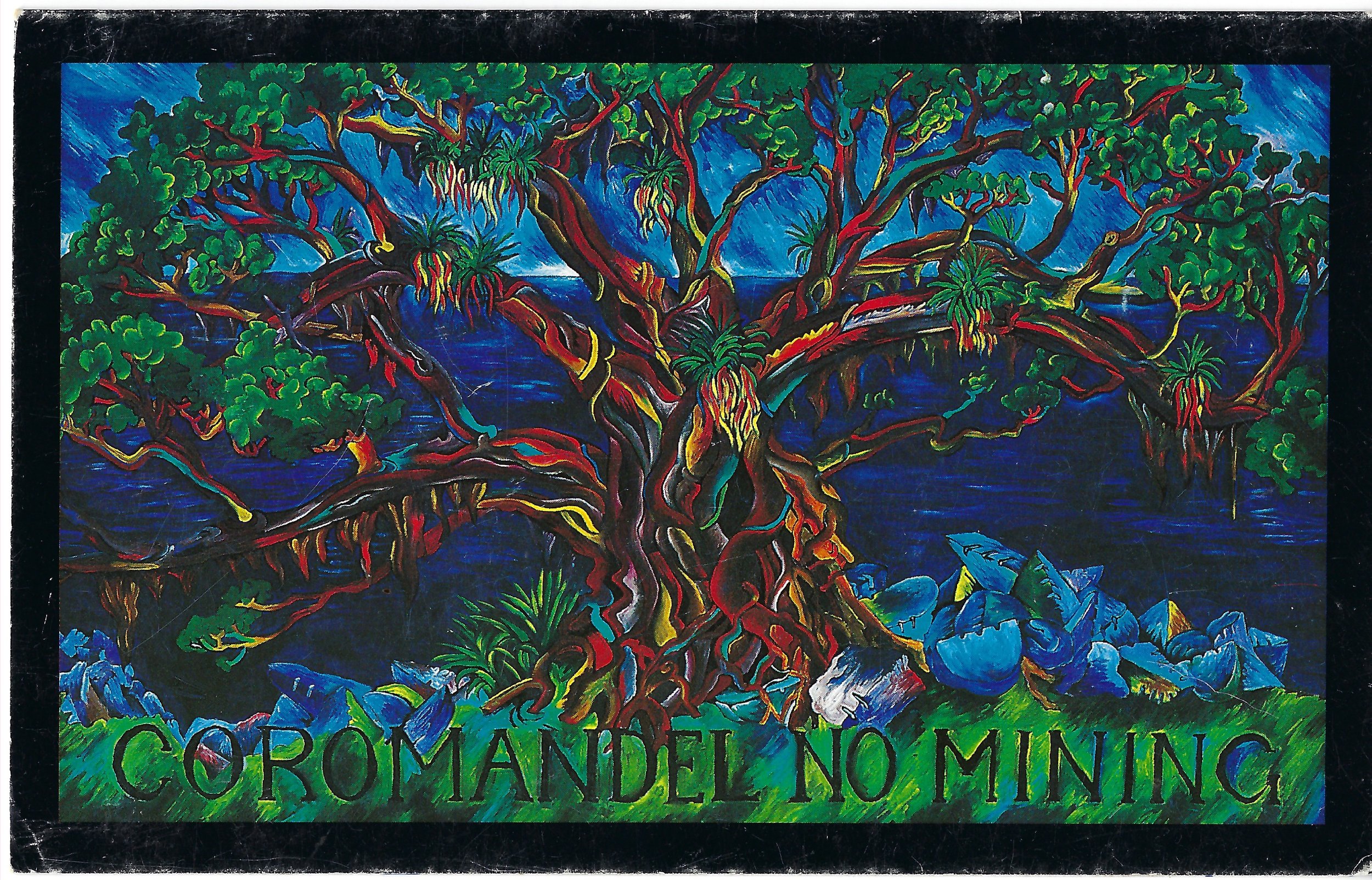
Since the 1970’s we Have Kept Mining out of Hauraki Coromandel
Our History
The First Gold Rush: 1880s
The Coromandel Peninsula experienced a campaign of colonisation in the late 1800s to the early 1900s that saw the whole of the Peninsula deforested, with gum digging, mining and finally settlement farming following.
The tangata whenua (indigenous people) of the rohe (area), were at this time alienated from much of it, seldom, if ever, fairly.
Several significant gold mines were established in the area but at the onset of the WWI the mines were abandoned.
Today, over 120 years later, tests carried out on the groundwater and soils from these mines record that the water is dangerous to human health with toxic carcinogens such as arsenic and cadmium are still present.
The Second Gold Rush: 1980s
In the early 1980s, the small communities of the Peninsula became a battleground as local residents fought back against various overseas-owned multinational mining companies who were demanding the right to mine both private and state-owned land. At that stage, private land owners could not, under law, refuse miners access to their land.
Grand statements were made by the mining companies about how they would establish opencast mines in the District and make the communities rich, but locals were alarmed by the proposals to level Moehau maunga, undermine kauri groves at Waiomu and and fill various valleys in Otama and Kūaotunu with toxic tailing dams. A strong opposition movement began to form.
The Fight Back: 1980s to 2000s
The spectre of proposed mining activity generated much discussion in the communities of the Peninsula and led to the formation of several groups opposing this onslaught. As the communities realised what they were up against, Coromandel Watchdog was formed as an umbrella, to pool resources, knowledge and to act for all.
The group’s goal was to reject mining in the area and, where necessary through non-violent direct action, ensure the protection of the surrounding environment, as well as the community and culture.
This protection came at a price for many of its members, as the next 15 years meant sacrifices on many fronts.
This protection came at a price for many of its members, as the campaign required sacrifices on many fronts. This eventually culminated in a law change negotiated with the Government that would protect Conservation Land from mining under Schedule 4 of the Crown Minerals Act and to allow private landowners the right to refuse mining companies access over their lands.
This unbelievable achievement by a grassroots group even inspired a movie about the fight: The Znail Gang.
The March on Queen Street: 2010
In 2010, John Key’s National Government attempted to open protected conservation land across the country for mining - including removing the Schedule 4 areas of the Peninsula (all conservation land north of SH25 the Kopu Hikuai Rd.).
The result of this proposal saw between 40,000 and 50,000 New Zealand citizens march up Auckland's Queen Street to demand that the protection remain, including future PM Jacinda Arden, who proudly marched the protest route carrying a sign proclaiming ‘OURS. NOT MINES’.
In the face of this public pressure the Government backed down from the proposal.
The Fight Returns: 2016–2018
During the 2010 pro mining onslaught, the Government coined a new term ‘surgical mining’ - not a technical term, but rather a PR term designed to con the public into thinking that mining could be ‘safe’ and have no impact. It was this that aided the renewed push of multinational miners to again target Te Tara o te Ika a Maui, the Coromandel. One of these companies was the owner of Aotearoa’s largest gold mine, the Macraes. They purchased the Waihi mine from Newmont Gold, and began a programme of exploration - to the dismay of the community.
In 2016 Oceana, supported by industry and a sympathetic Government, moved to weaken provisions to keep industrial mining out of the District by challenging provisions in the District Plan prohibiting various activities; and while Watchdog, on behalf of the many groups and communities that do not want mining, won much of the fight, land in the rural Rural Zoned remains at risk.
Watchdog and a number of private citizens challenged the appeal while KAMAG ran a communications campaign, all of this work led to MBIE and OceanaGold dropping their case. The end result was a double win with an even stronger set of rules enshrined in the District Plan.
The Fight Continues: today
Sadly, the introduction of the Fast Track Act and other development focussed legislative change, now threatens to undermine the last 40+ years of progress: preventing our communities - including tangata whenua - having a say and sidestepping environmental protections are just two of the components of this highly undemocratic Act.
There are already huge areas of land in the Coromandel subject to Exploration Permits and drilling has recently (early 2025) begun in Te Rerenga and Whenuakite.
Together with local Kuaotunu area group KAMAG, Watchdog has been inspired by the Australian campaign Lock the Gate to rally private landowners to take a clear stand against mining, and in 2020 launched Lock the Gate NZ. We have all seen from Waihi that the mining companies can mine underneath you without your permission, so it is important that communities unite to stop them from having an access point!
Whether it be high value conservation land, or private farms and homes, the miners want the gold - and we don’t want them or the degradation to the land, or the toxic waste they leave!
It’s simply an issue of whether or not you love your land - will you lock the gate?
ASIA Pacific Report, June 8, 2024






